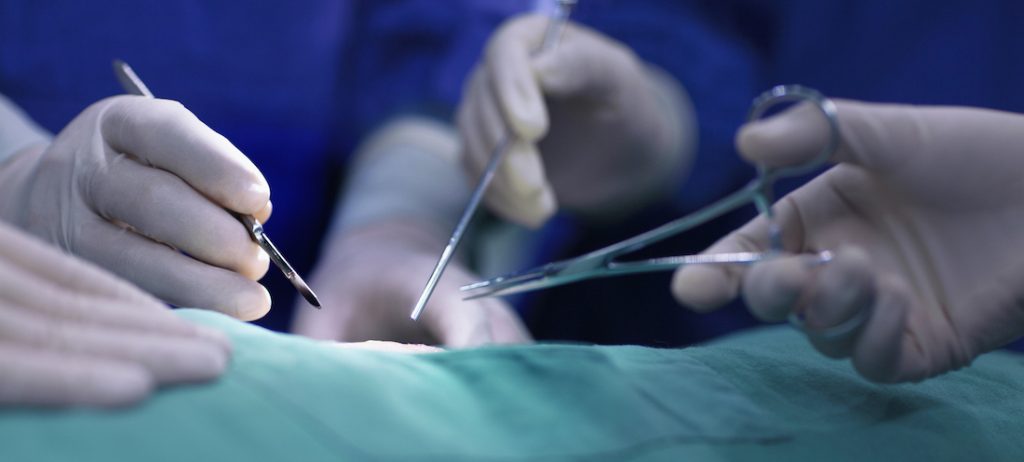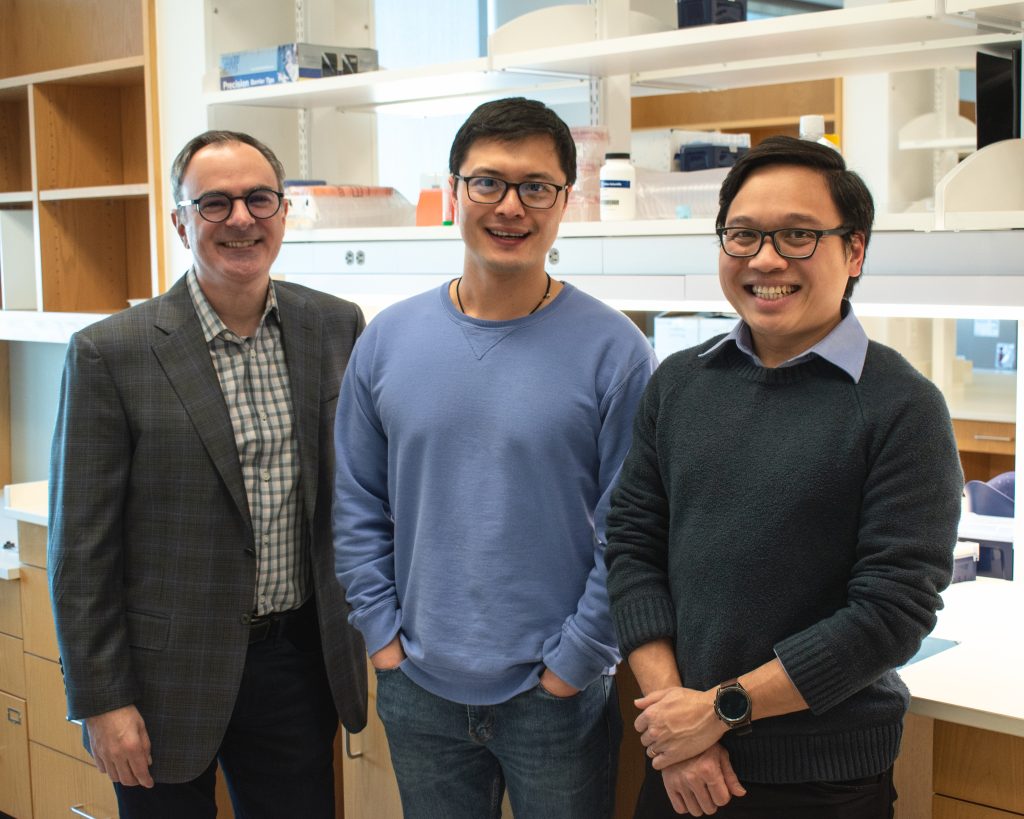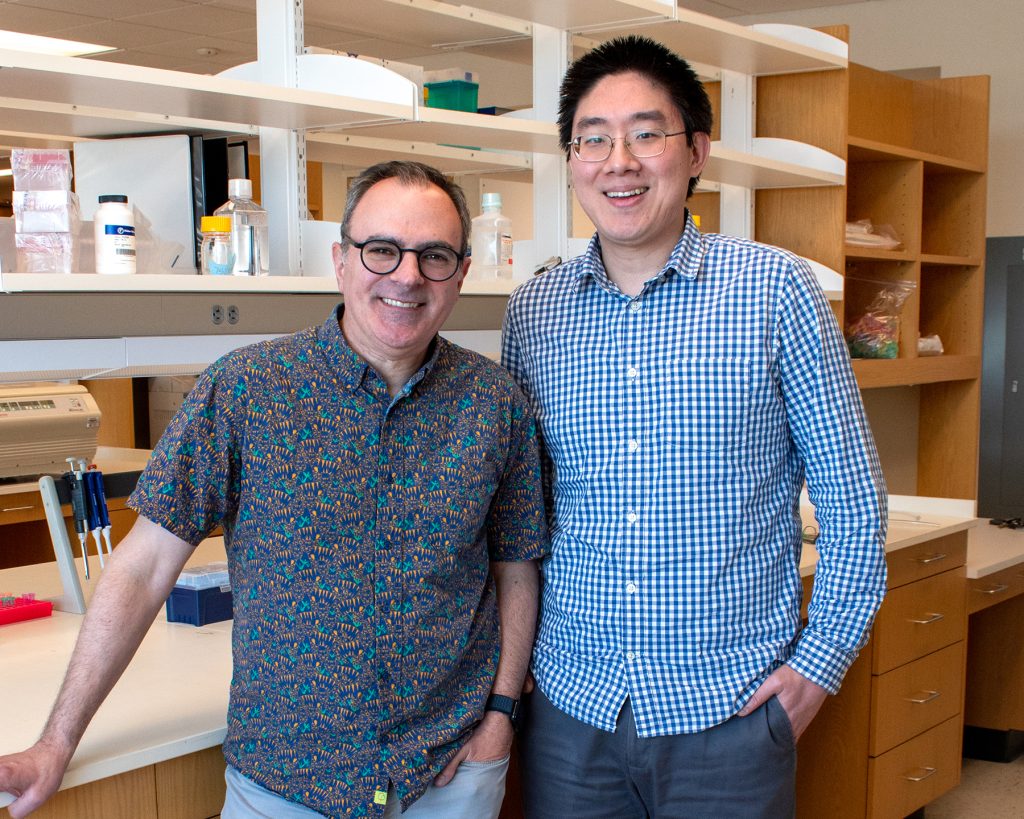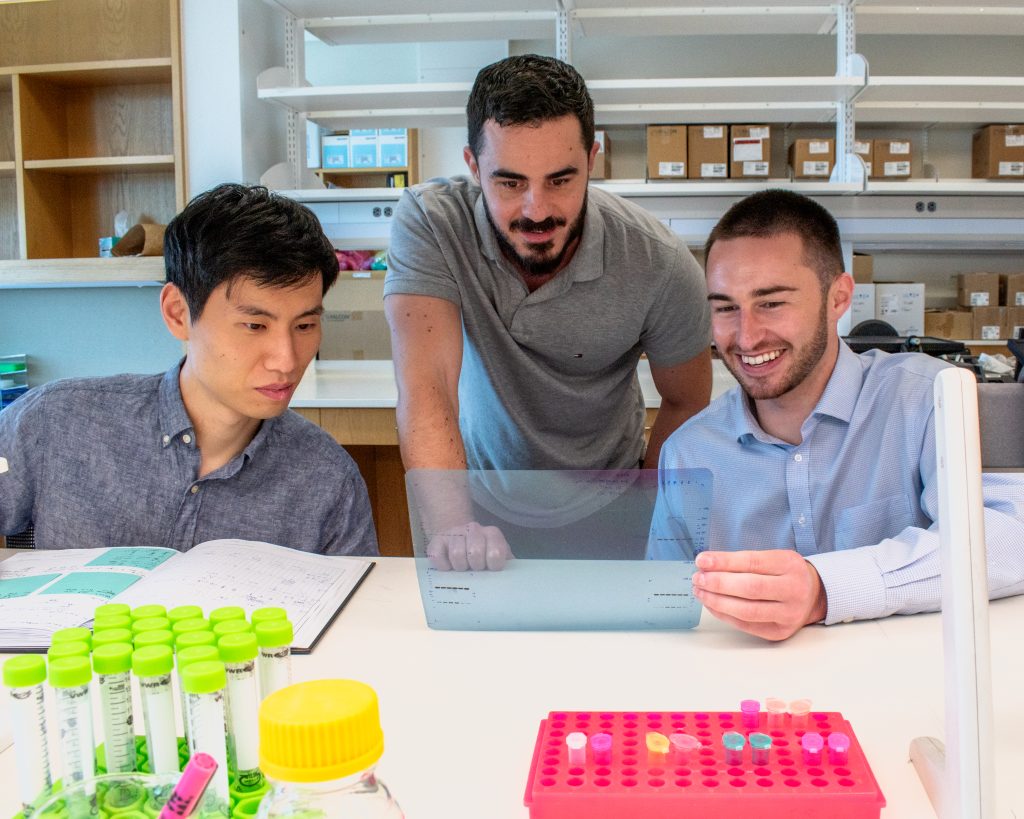
DALLAS – Feb. 19, 2025 – In localized non-small cell lung cancer (NSCLC), a tumor’s ability to use carbon from glucose to feed the tricarboxylic acid (TCA) cycle predicts cancer spread beyond the lung, months to years before metastases are clinically apparent. According to this new research from Children’s Medical Center Research Institute at UT Southwestern (CRI) published in Cancer Discovery, tumors with this metabolic activity result in early patient death.
Ralph J. DeBerardinis, M.D., Ph.D., Professor and Director of the Eugene McDermott Center for Human Growth and Development at UT Southwestern and Professor in CRI, along with his former postdoctoral fellows — co-senior author Brandon Faubert, Assistant Professor of Medicine at the University of Chicago, and first author Ling Cai, Ph.D., Assistant Professor in the Peter O’Donnell Jr. School of Public Health at UT Southwestern — developed an isotope infusion assay to study cancer metabolism in 90 patients while their tumors were being surgically removed.
The scientists followed patients for up to 11 years after surgery to assess cancer progression and survival as part of a long-standing collaboration with Kemp Kernstine, M.D, Ph.D., Professor of Cardiovascular & Thoracic Surgery at UT Southwestern.

Ralph J. DeBerardinis, M.D., Ph.D., Professor and Director of the Eugene McDermott Center for Human Growth and Development and Professor in Children’s Medical Center Research Institute at UT Southwestern, has been a Howard Hughes Medical Institute Investigator since 2018.
“Through this prospective, longitudinal study to assess metabolic properties in human non-small cell lung cancers, we specifically sought out properties that correlate with how the cancer progressed after the primary tumor was removed,” Dr. DeBerardinis said. “We wanted to see which cancers metastasized faster because blocking the pathways used by those tumors to spread might extend patient survival.”
Lung cancer is the most common cause of cancer-related death in the United States, according to the American Cancer Society, and 85% of lung cancers are classified as NSCLC. Since NSCLCs display variable metabolic features, DeBerardinis Lab researchers sought to find which metabolic features might predict tumor aggressiveness.
The scientists discovered almost all NSCLC tumors incorporated carbon from glucose into the TCA cycle to a greater extent than the lung tissue surrounding the tumor. But patients whose tumors had the highest incorporation had worse outcomes, including much more rapid progression to recurrent or metastatic cancer, and earlier death.
By implanting the same tumors into mice, CRI scientists showed blocking glucose’s ability to feed the TCA cycle suppressed metastatic spread, even though tumors at the site of origin continued to grow.
“We already knew not all tumors used the same metabolic pathways, but it has been difficult to tell which pathways actually matter in terms of cancer mortality,” Dr. DeBerardinis said. “Our study shows isotope tracing, performed in patients with cancer, can identify pathways that predict cancer spread, even far into the future.”
This DeBerardinis Lab discovery builds on prior research, which showed kidney cancers also rely on flexible mitochondrial metabolism to metastasize. Both studies will guide future research to understand how these metabolic pathways promote cancer progression and whether they can be safely blocked, Dr. DeBerardinis said.
Dr. DeBerardinis has been a Howard Hughes Medical Institute Investigator since 2018. He is Director of the CRI Genetic and Metabolic Disease Program and co-leads the Cellular Networks in Cancer Research Program in the Harold C. Simmons Comprehensive Cancer Center at UT Southwestern.
Dr. DeBerardinis holds the Eugene McDermott Distinguished Chair for the Study of Human Growth and Development and the Philip O’Bryan Montgomery Jr., M.D. Distinguished Chair in Developmental Biology, and is a Sowell Family Scholar in Medical Research.
Other UTSW researchers who contributed to this study include Quyen Do, Ph.D., Assistant Professor of Radiology; Bret Evers, M.D., Ph.D., Assistant Professor of Pathology and Ophthalmology; Thomas P. Mathews, Ph.D., Assistant Professor in CRI and of Pediatrics; John Minna, M.D., Director and Professor of the Hamon Center for Therapeutic Oncology Research, Professor of Internal Medicine and Pharmacology, and co-Leader of the Experimental Therapeutics Research Program in the Simmons Cancer Center; Sean J. Morrison, Director and Professor in CRI and Professor of Pediatrics; Dwight Oliver, M.D., Professor of Pathology; Ashley Solmonson, Ph.D., Assistant Professor in the Cecil H. and Ida Green Center for Reproductive Biology Sciences and of Obstetrics and Gynecology; and John Waters, M.D., Assistant Professor of Cardiovascular & Thoracic Surgery.
Drs. Cai, Kernstine, Minna, Morrison, Oliver, and Waters are members of Simmons Cancer Center.
About CRI
Children’s Medical Center Research Institute at UT Southwestern (CRI) is a joint venture of UT Southwestern Medical Center and Children’s Medical Center Dallas. CRI’s mission is to perform transformative biomedical research to better understand the biological basis of disease. Located in Dallas, Texas, CRI is home to interdisciplinary groups of scientists and physicians pursuing research at the interface of regenerative medicine, cancer biology, and metabolism.
X/Twitter | Blue Sky | LinkedIn | Instagram | YouTube | Facebook
About UT Southwestern Medical Center
UT Southwestern, one of the nation’s premier academic medical centers, integrates pioneering biomedical research with exceptional clinical care and education. The institution’s faculty members have received six Nobel Prizes and include 25 members of the National Academy of Sciences, 23 members of the National Academy of Medicine, and 14 Howard Hughes Medical Institute Investigators. The full-time faculty of more than 3,200 is responsible for groundbreaking medical advances and is committed to translating science-driven research quickly to new clinical treatments. UT Southwestern physicians provide care in more than 80 specialties to more than 120,000 hospitalized patients, more than 360,000 emergency room cases, and oversee nearly 5 million outpatient visits a year.



